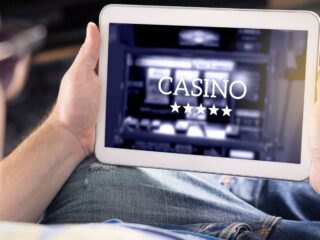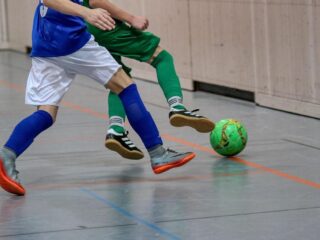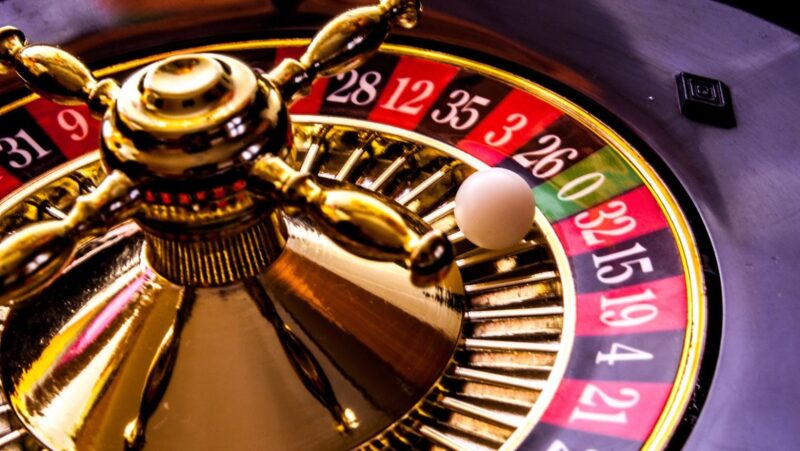
Whether you’re playing golf or soccer, heading out for a run, finishing a tough HIIT session, pushing through a heavy lift, or completing a long-distance workout, recovery is where the real progress happens. But if you’ve ever felt sore, drained, or crampy even after “drinking plenty of water,” you may be missing a key piece of the puzzle: electrolytes. We spoke with expert nutritionists and golf athletes to learn how electrolytes support faster recovery, reduce soreness, and restore energy for your next session—plus a simple, science-backed way to add them to your nutrition plan.
What Are Electrolytes and Why They Matter for Athletes
Rachel Gargano, MS, RD, CSSD, CBS At Live it Up explains: Electrolytes are important substances that aid with maintaining water balance by shifting fluid between intracellular and extracellular compartments, maintaining membrane electrochemical potentials, and transporting nutrients into and waste out of the cell. For athletes, electrolytes is really important because it helps with the optimization of exercise performance, and ensuring athlete safety. During intense workouts, sweat depletes electrolytes rapidly, especially sodium and potassium. Water alone can’t replace these minerals, which is why recovery hydration must go beyond refilling your bottle. On average, athletes lose about 1–3 liters (32–98 ounces) of sweat for every hour of exercise. Since sweat is composed of roughly 99% water and 1% electrolytes—including sodium, chloride, potassium, magnesium, and calcium—it’s essential to replace both fluids and electrolytes.
The Recovery Cycle After an Intense Workout: Where Electrolytes Fit In

Muscle recovery is very important after a period of physical exercise, especially for athletes, who train intensely and compete in competitions. For muscle recovery to happen fully and correctly, the first step is to prioritize sleep. It is necessary for the body and mind to be rested so that muscle recovery can take place and to ensure that the athlete will continue to have enough energy for the next few days of exercise.
Kat Benson, CSSD, CPT at VNutrition explains: Designated rest days help athletes recover and heal after training and competitions. The periodization, explained as the process in which periods of training are alternated with periods of rest, improves performance and helps decrease injury. In addition, to make sure the athlete will have a full recovery, make sure you fuel properly.
Some examples of electrolytes:
| Electrolyte | Primary Role | Why It Matters for Athletes |
|---|---|---|
| Sodium | Fluid balance, nerve function | Prevents cramping and dehydration |
| Potassium | Muscle contraction, glycogen storage | Reduces post-workout fatigue |
| Magnesium | Protein synthesis, muscle relaxation | Supports muscle repair |
| Calcium | Muscle signaling, bone strength | Helps prevent spasms |
| Chloride | Fluid regulation | Aids rehydration post-sweat loss |
Electrolytes and Reduced Muscle Soreness: What the Science Says
After running for several hours or pushing through a long bike ride, it’s common to feel some discomfort as you try to maintain your performance. Sometimes that itching or aching feeling makes you wonder whether you should keep going. When should you worry about leg pain? Is your body simply asking for more fuel and hydration, signaling that you need a short break—or could it be a sign of a more serious strain? Delayed-onset muscle soreness (DOMS) can be usually observed 12-24 hours after unaccustomed strenuous exercise but may also be seen in elite athletes, especially during pre-season when training intensity increases very quickly or in the early post-rehabilitation phase following injury. Normally affects multiple limbs and is associated with excessive eccentric muscle contractions.
Low magnesium or potassium, for instance, can prolong recovery time and increase stiffness after high-intensity exercise. While electrolytes don’t “cure” soreness, they can significantly reduce its intensity and duration when combined with adequate rest and nutrition.
While only a professional can diagnose an injury, listening to your body is essential. Sudden, sharp, or worsening pain usually means it’s time to pause. In many cases, keeping your body properly fueled and hydrated can help reduce discomfort and support safer, more consistent performance.
Electrolytes for Energy Replenishment & Hydration Efficiency
Rachel Gargano, MS, RD, CSSD, CBS at Live It Up adds: While carbohydrates restore glycogen, electrolytes ensure those nutrients actually reach your muscle cells. Sodium and potassium regulate the pumps that move glucose and amino acids across cell membranes, a key step in restoring energy stores. The optimal window for electrolyte replacement is within 0–60 minutes post-workout, when your body is most receptive to nutrient uptake.

A balanced diet and a steady routine remain essential, even for athletes with specific lifestyles—whether they’re dedicated to golf or pushing their limits in high-intensity sports. Gary Player, legendary golfer and one of the game’s greatest champions, believes that discipline is non-negotiable for any athlete. He emphasizes this often, saying, “You need discipline and intention..”
Vegan athletes, for example, can perform at elite levels with proper planning. Pairing a nutrient-dense diet with smart hydration and supplementation supports peak performance. You can learn more at VNutrition.
How to Replenish Electrolytes: Practical Steps & Best Sources
Rachel Gargano, MS, RD, CSSD, CBS adds: You don’t need to spend much money on fancy formulas, you just need to make the right choices and consume the right minerals.
Whole Food Sources
| Food | Key Electrolytes | Best Time |
| Bananas, avocados | Potassium, magnesium | Post-workout snack |
| Greek yogurt | Calcium, sodium | Recovery meal |
| Spinach, pumpkin seeds | Magnesium | Dinner or smoothie |
| Coconut water | Potassium, sodium | During or after workouts |
When to Use Electrolyte Drinks or Powders
Use an electrolyte drink or powder when:
- You sweat heavily or train in heat
- Your session lasts over 60 minutes
- You experience cramps or fatigue despite hydration
When choosing an electrolyte powder, you must focus on transparent, quality options. This product must deliver balanced sodium, magnesium and potassium, without sugar overloads or synthetic additives.
Common Mistakes & Myths About Electrolytes and Recovery
Myth 1: “Water is enough.”
Pure water dilutes plasma sodium if not paired with electrolytes, potentially worsening fatigue.
Myth 2: “More sodium equals better recovery.”
Excess sodium can cause bloating or high blood pressure. Balance is key.
Myth 3: “Sports drinks are the best option.”
Many commercial drinks are sugar-heavy and low in magnesium, exactly what fatigued muscles need most.
Myth 4: “You only need electrolytes post-workout.”
Start hydration before exercise and continue during and after for best performance and repair.
Conclusion and Action Plan
Quick Recovery Checklist:
- Rehydrate with balanced electrolytes within 60 min post-workout
- Include potassium and magnesium-rich foods daily
- Avoid sugar-loaded sports drinks
- Track sweat rate and adjust intake for heat or endurance sessions
- Support overall recovery with rest, stretching, and quality sleep
Hydration is very important for everyone, whether they are athletes or not. But especially when practicing physical activities, particularly high-intensity ones, it is necessary to replenish minerals. Whenever you have questions, seek professional help and focus on products that really work and are manufactured responsibly. And remember: the basics work.












